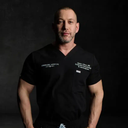I am 5.7 foot tall and my weight is 57 kilos. I have always been fairly thin. I just turned 30 and I feel my face looks tired and sagging. Since childhood I have had a rounded fact with large cheecks, and I feel they are starting to come down. I have much more marked naso-labial folds and cheeks are more noticeable on the jaw line. Members of my family have used fillers and due to the large cheeks they give the impression of being "swollen" or fat. Can radio frequency or any other treatment help?
Answers (4)
From board-certified doctors and trusted medical professionals
Dr. Farhan Taghizadeh, MD

Dr. Farhan Taghizadeh, MD
Board Certified Facial Plastic Surgeon
Answer
Dr. Jason Emer, MD

Dr. Jason Emer, MD
Dermatologic Surgeon, Board Certified in Dermatology
Answer
Answered on Nov 15, 2015
Answer
Dr. Francis R. Palmer, III, MD (retired)
Dr. Francis R. Palmer, III, MD (retired)
Board Certified Facial Plastic Surgeon
Answer
More Dermal Fillers Questions
See all Dermal Fillers Q&AWE SEND PRETTY
EMAILS
What’s trending? Who’s turning heads? Which TikTok myths need busting? We’ve got you. No fluff, no gatekeeping—just real talk. Get our free, unfiltered newsletter.